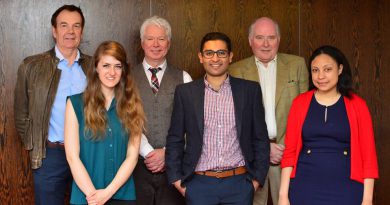Ayahuasca – The Power to Transform Your Brain
Psychedelic substances have been known to help people fight their past traumas and different mental illnesses such as PTSD, anxiety, etc. Ayahuasca falls into this category. It is a shamanic plant from the Amazon Valley that contains a psychedelic drug, which is used at many Ayahuasca retreat centres for healing numerous mental problems.
Medical science believes that this drug has the power to heal the brain by offering higher introspection and consciousness. Brain studies also prove that the drug has a profound effect on neural activities.
However, it is not everyone who believes in this power, primarily because of the lack of understanding. Let’s see how exactly the power of Ayahuasca works.
How does Ayahuasca Work on the Brain?
Broadly, it works on three different parts of the brain. It strikes the neocortex, making it hyperactive in nature. The neocortex is a cortex that controls the functions of language, sensory perception and consciousness; in short, the drug allows a person to know themselves better. In addition to this, the shamanic plant also activates the amygdala: the region associated with long-term memories and the insula; a part that is responsible for emotional decision-making. Ayahuasca activates the region of the brain where emotional memory is stored and processed. With this hyperactivation, it activates the conscious part of the brain to temporarily remove previously entrenched patterns, making new connections. This essentially stimulates neuroplasticity through the formation of new neuronal connections.
The plant stimulates an introspective state of mind through which an individual undergoes many meaningful experiences, says Dr. Jordi Riba (Associate researcher at Sant Pau Hospital), a famous Ayahuasca researcher. He believes that people who consume it, experience a trip that is intense, and its level depends on the dosage. The effect of the plant comes after approximately 45 minutes and hit the peak within half an hour causing some physical symptoms such as vomiting and nausea. Due to the effective healing process, many Ayahuasca centres in California, Brazil, Peru and many other places are working to reduce mental problems like depression, PTSD, etc. Working on the old memories and creating them in an entirely new way, helps an individual overcome emotional setbacks. Hence, this is a great way to cure people’s mental disorders such as stress disorder, addiction, anxiety, etc.
In the early 1950s, a Harvard ethnobotanist, Richard Evans spoke about this substance, mentioning that some communities in Amazon use the plant for healing and divinatory purposes. A research group at Sant Pau hospital in Barcelona, Spain has initiated clinical trials using Ayahuasca for treating resistant patients. In fact, the group is currently studying the post-acute stage after consuming the shamanic plant. And, they found that some regions of the brain are associated with a sense-of-self, having a stronger connection to other areas that are responsible for autobiographic emotions and memories. The group believes that the synergy between mindfulness training and Ayahuasca experience will increase the success rate of psychotherapeutic intervention.
Conclusion:
Studies prove and brain scans have shown that Ayahuasca has the tendency to decrease the brain’s default network, which when overactive can result in depression, anxiety and social phobia. It also helps consumers enter a meditative state of mind. In particular cases it is doing phenomenally well in the treatment of drug addicts, depressed patients, and many other mental health issues. Ayahuasca retreat centres are inducing self-insights that result in changing perspective in human psychology. This is one of the most promising alternative medicine treatments for people suffering from personal problems, triggered during their early life or after any kind of misfortune, where neuroplasticity can help rewire our brains.




